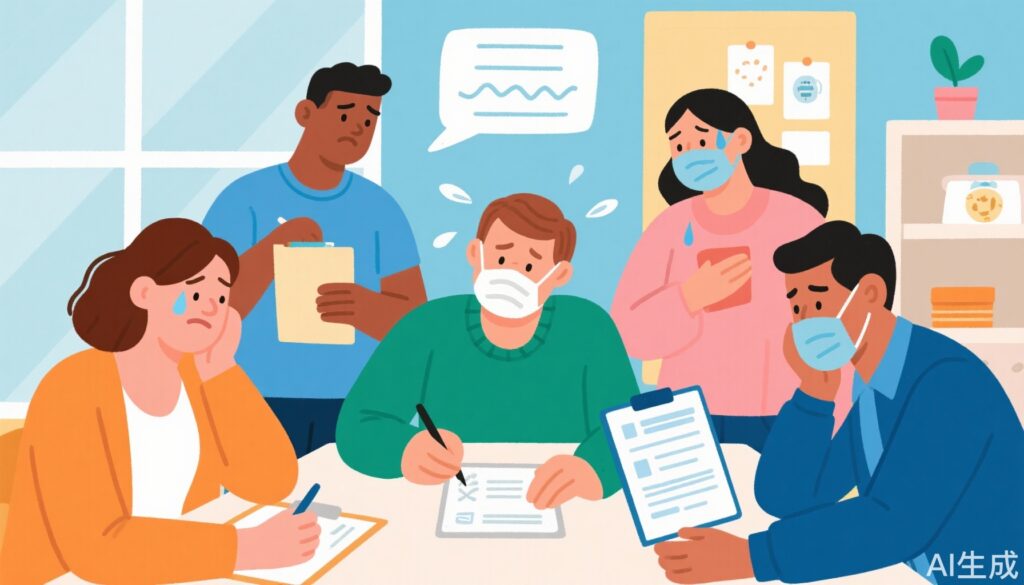Introduction
A recent survey encompassing over 107,000 adults in the U.S. from 2019 to 2022 has revealed alarming increases in clinician-diagnosed rates of depression and anxiety across different racial groups. This research underscores the persistent and often widening racial health disparities exacerbated by the COVID-19 pandemic.
Study Overview
The findings were published in BMC Medicine, with the research team led by Harvard University. They focused on self-reported health indicators, such as overall health status, functional limitations, and mental health conditions, while also examining access to healthcare and its affordability. The median age of participants was 48.1 years, consisting of 51.6% women. The demographic breakdown included 64.5% White, 17.3% Hispanic, 12.1% Black, and 6.1% Asian respondents.
Impact on Mental Health
According to the authors, “Data suggest that the adverse mental health effects and mental health care during the COVID-19 pandemic also differ significantly by age, education, employment status, and income levels.” This indicates that demographic factors play a crucial role in the mental health outcomes experienced during this crisis.
Furthermore, the COVID-19 pandemic has disproportionately affected disadvantaged populations, accentuating the critical role of social determinants in health outcomes. The study highlights that the economic impacts of the pandemic have resulted in increased stress, anxiety, and depressive symptoms among those already facing socio-economic challenges.
Healthcare Access and Affordability
Despite some improvements in healthcare access and affordability, these benefits were primarily seen in White populations. Low-income Black participants reported the highest rates of poor or fair health, with 30.9% in 2019 and 28.4% in 2022 showing little change in this racial health gap.
As noted, “These trends continue to underscore additional public health and policy interventions are needed to further reduce the racial/ethnic and income disparities in health status and healthcare access and affordability.” The overall rising prevalence of anxiety and depression during the study period was more pronounced among White respondents, whose rates climbed from 32.6% to 38.2%. Researchers suggest this may indicate a decline in neighborhood social cohesion for this demographic.
Low-income Hispanic respondents faced significant barriers, exhibiting the highest estimated prevalence of limited healthcare access during the pandemic. While access and affordability of health insurance improved for low-income White individuals, other racial groups did not witness similar improvements.
Conclusion and Recommendations
“There is an urgent need to promote psychological health and broaden mental health care access for U.S. adults after the pandemic,” the researchers concluded. This statement reflects the pressing requirement for tailored interventions that address the unique needs of various racial and socioeconomic groups. Immediate actions are necessary to close these persistent gaps in health status and access to care, particularly in light of the substantial mental health challenges that have surfaced during the pandemic.
As public health officials and policymakers work towards recovery from COVID-19, a focus on equity is essential to ensure that vulnerable populations receive adequate support and resources to improve their mental health outcomes.


